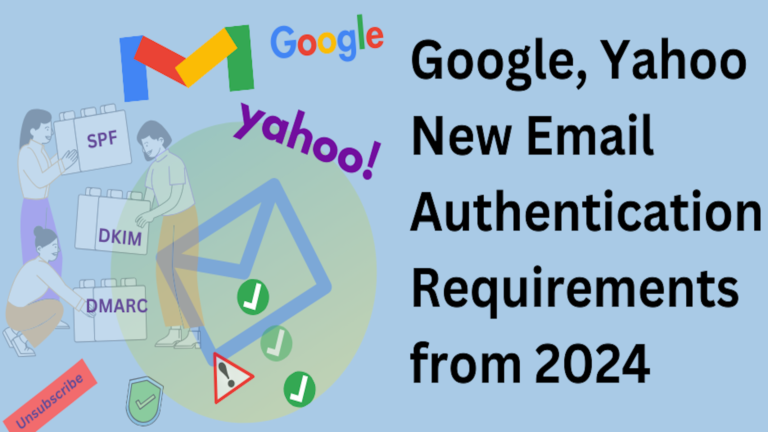From sorting out problems with email deliverability to using DJ-event-management tools, here’s a list of tips to assure your emails are received by clients.
Over the last couple of months, some of my clients have come to me to sort out problems with their email deliverability. Specifically, the DJ-event-management tool that they use – no names, we can save that conversation for another day – were “breaking,” in that the emails that were being sent by the tool in question were not being received by the customers of my clients.
Now, this is a really stressful situation, as most robust DJ organizational tools have automated emails sent out that do all kinds of client and staffing tasks, including but not limited to the following:
- Sending Contracts
- Sending Reminders
- Sending Staff Instructions on Performance
After assisting these clients in dealing with their tool provider to fix the immediate problem, I, of course, dove into the root cause, in order to better understand this issue. It’s a pretty serious change in the email industry, and so I thought it was worth an article all on its own. Essentially…
The major players in the email industry have adjusted their Domain Name System (DNS) requirements in order to further prevent worldwide spam.
Back in the early days of the internet, email authorization wasn’t really a thing, as the only networks being run in the late ’80s were from governments and universities. In the early ’90s, though, the commercialization of the internet began. This, of course, brought on the aspect of email spam, including spoofing – someone remind me to tell the story of Sanford Wallace at DJX this coming August. Email Service Providers (ESPs) began to implement verification methods, in an effort to clamp down on email bad actors, and over the years the sector has morphed into using three methods. Here they are:
- SPF (Sender Policy Framework). This one has been around since 2003, and is the starting point for locking down your email; essentially, it allows the domain name owner to authorize where an email is allowed to be sent from by matching sender domain name against your DNS records to see if the IP address of the server that actually sent the email has been authorized. If that authorization is there, you’re good to go. If not, you either end up in the spam box… or perhaps, your email doesn’t even get delivered!
- DKIM (DomainKeys Identified Mail). Launched in 2007, DKIM was the next big framework out there to help clamp down on spam. Again, DKIM is configured through your DNS through two or more private-public keypairs (usually entered as CNAME values) that create a cryptography chain-of-trust. Once entered correctly, your outgoing emails are judged at sending and receiving, which prevents a bad actor from spoofing your email address (known as a “man-in-the-middle attack”).
- DMARC (Domain-based Message Authentication, Reporting & Conformance). The third big email standard out there, DMARC came out in 2012. As opposed to SPF and DKIM, DMARC tells ESPs what to do should an email address fail an authentication process. DMARC allows you to publish a policy into your DNS that is recognized by the big email providers that instructs them what to do with bad emails.
Now that you know about the big three standards in email verification, you’re ready for the news as to why these problems that I describe above started affecting most of the DJ world. What it boils down to is this:
For the first time ever, all the big email providers have started to insist that people/companies who use email beyond normal personal usage have their DNS configured for all three of the frameworks listed above.
Going further, the big email players have also tightened up on Unsubscribes and Complaints, as follows:
- Total Unsubscribes from any blast must be below 3-percent (used to be 5-percent).
- Total Complaints (i.e., spam reporting) from any blast must be below 0.1-percent (used to be 0.5-percent).
- The link to unsubscribe must be an intuitive one-click process. If it’s one of those cumbersome bait-and-switch processes, you’ll get banned.
So, what to do? Here’s what:
- Make sure your DNS entries for SPF-DKIM-DMARC are set properly.
- Verify that your SPF-DKIM-DMARC is configured correctly for whatever third-party tools that you want to have sending email on your behalf. Note: It’s the responsibility of the tool/platform you’re using to give you these instructions. Don’t let them make you feel guilty at all!
- Do not ignore the new unsubscribe/complaint limits. It’s very difficult to get off the spam blacklists once you’re on there.
- Above all, send good organic emails to people who want your content!
- Consider changing your email sender domain to something different from your main website url. For example, if your DJ company website is at midnightmusic.com, think about using something like midnightmusicinfo.com.
I’ve seen bulk email marketers literally have to change their domain name due to getting in trouble for not paying attention to established email marketing guidelines. Don’t let this happen to you!
P.S. – Feel free to contact me via the links below on this or any topic within the digital world.
Jordan St. Jacques is the President/Lead Digital Marketer at Digitera.Interactive in Ottawa, Ont., Canada. He’s also part of the Author Collective from National Disc Jockeys.



